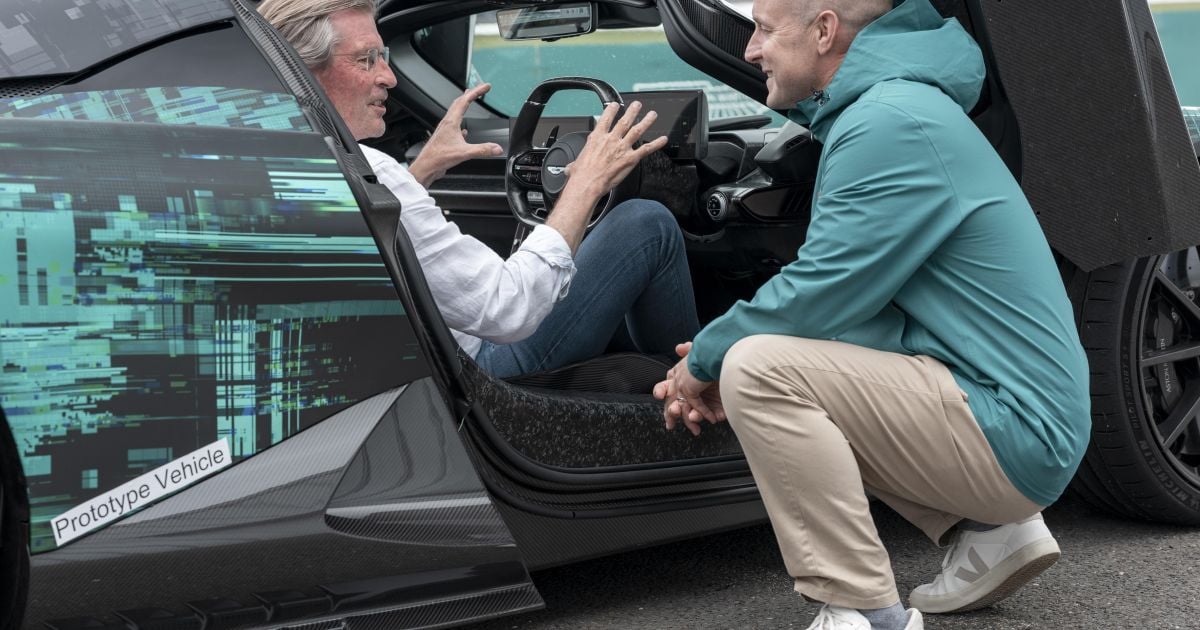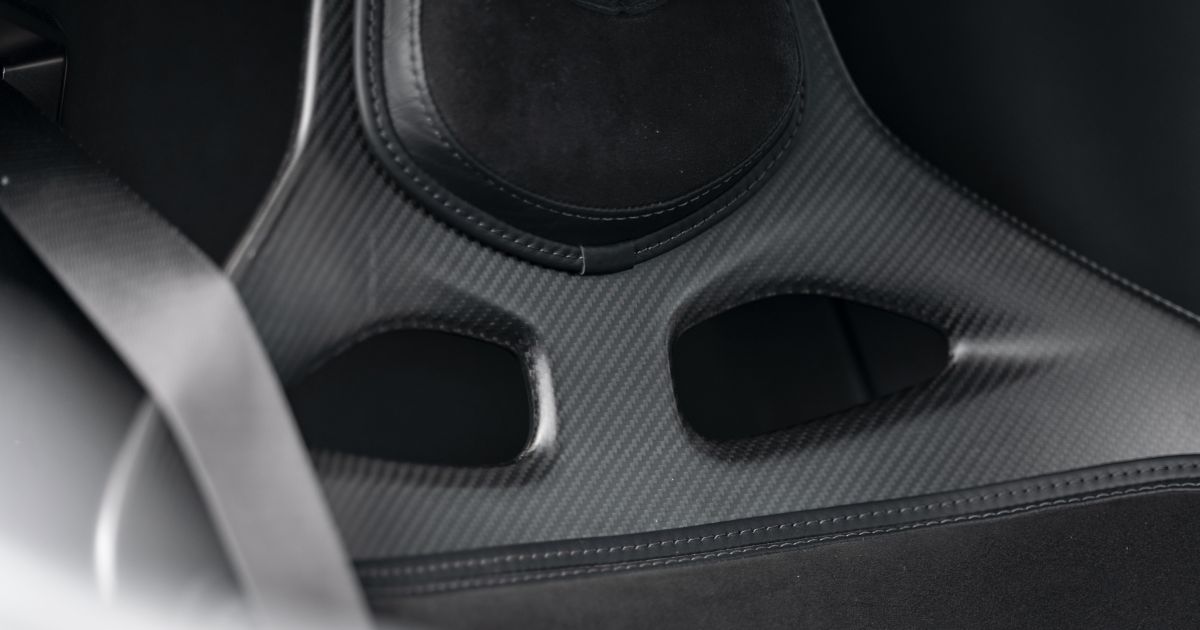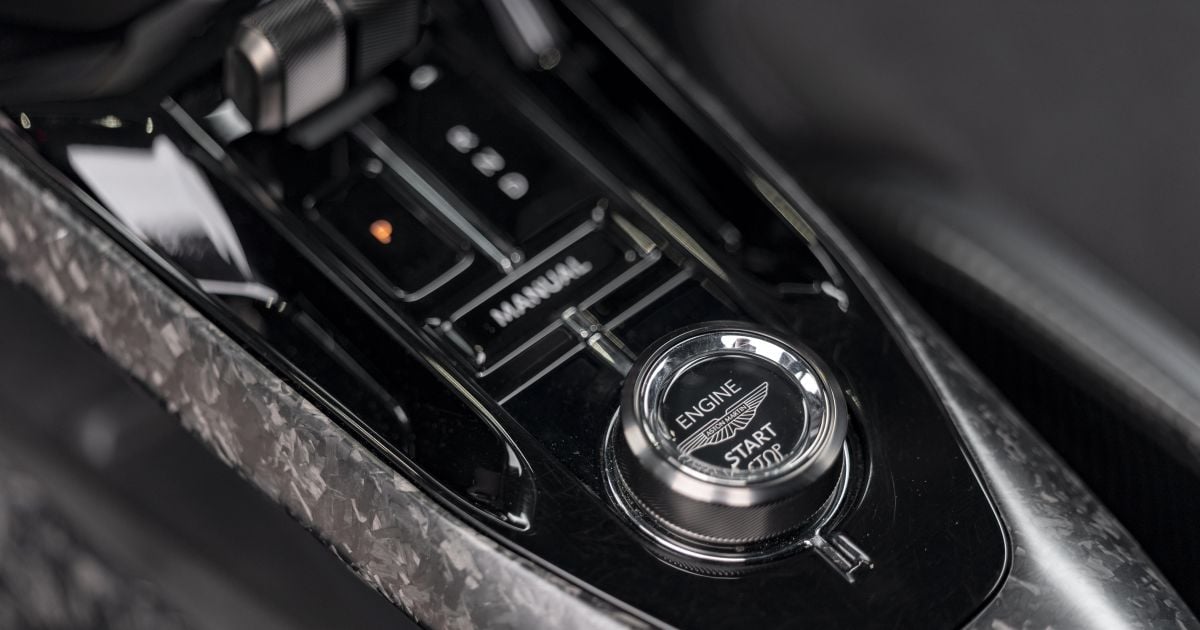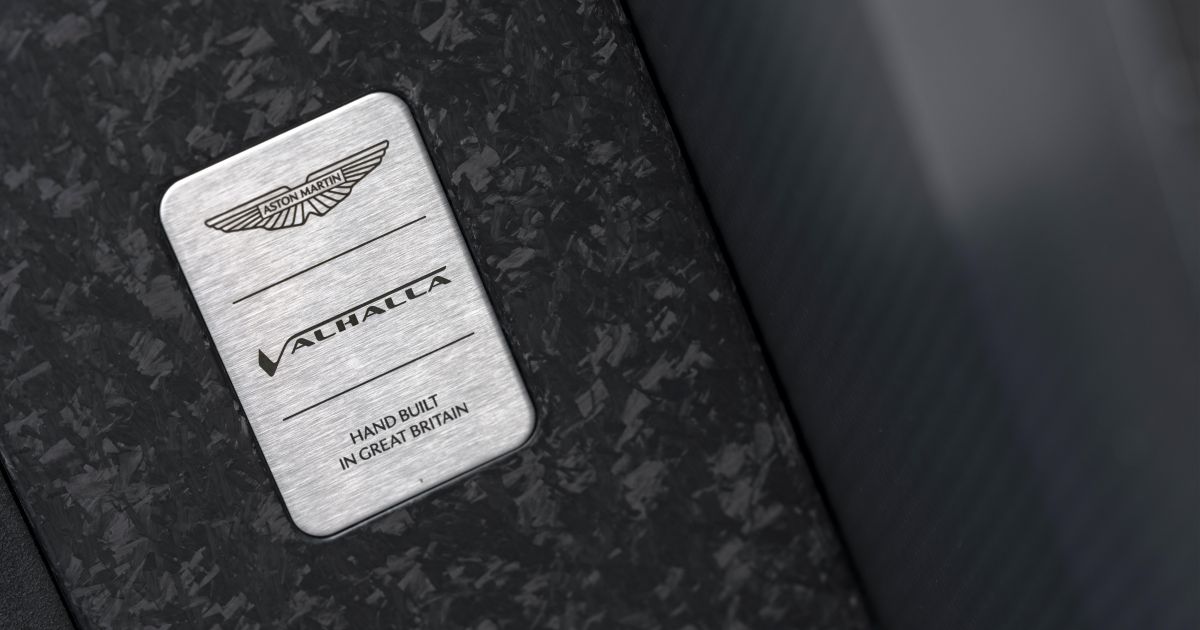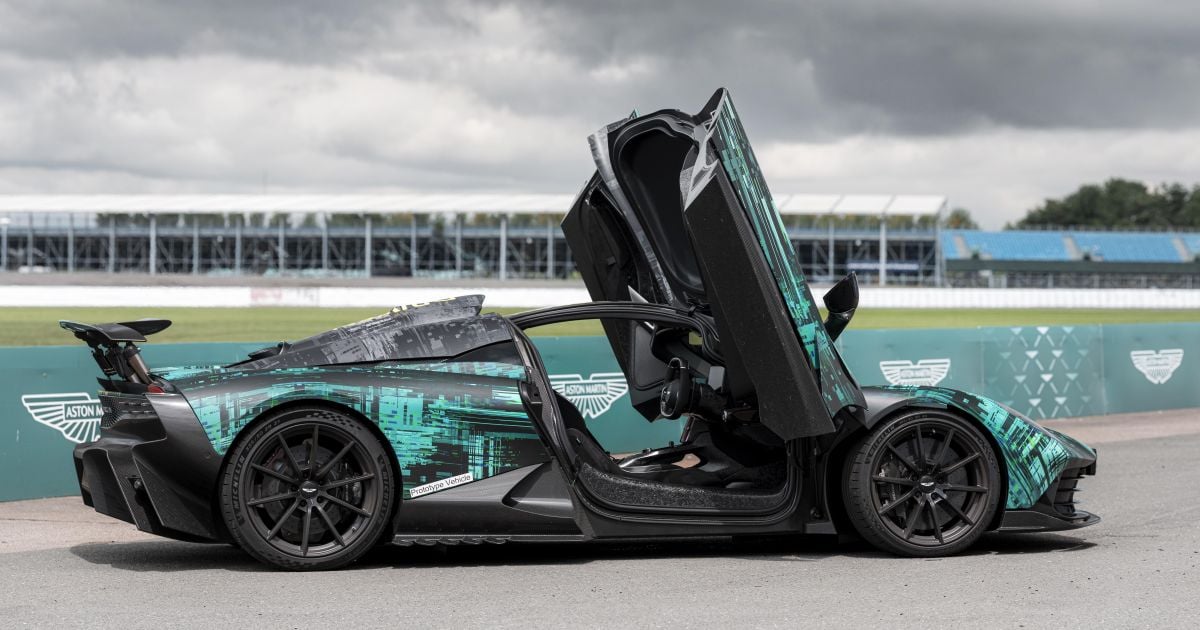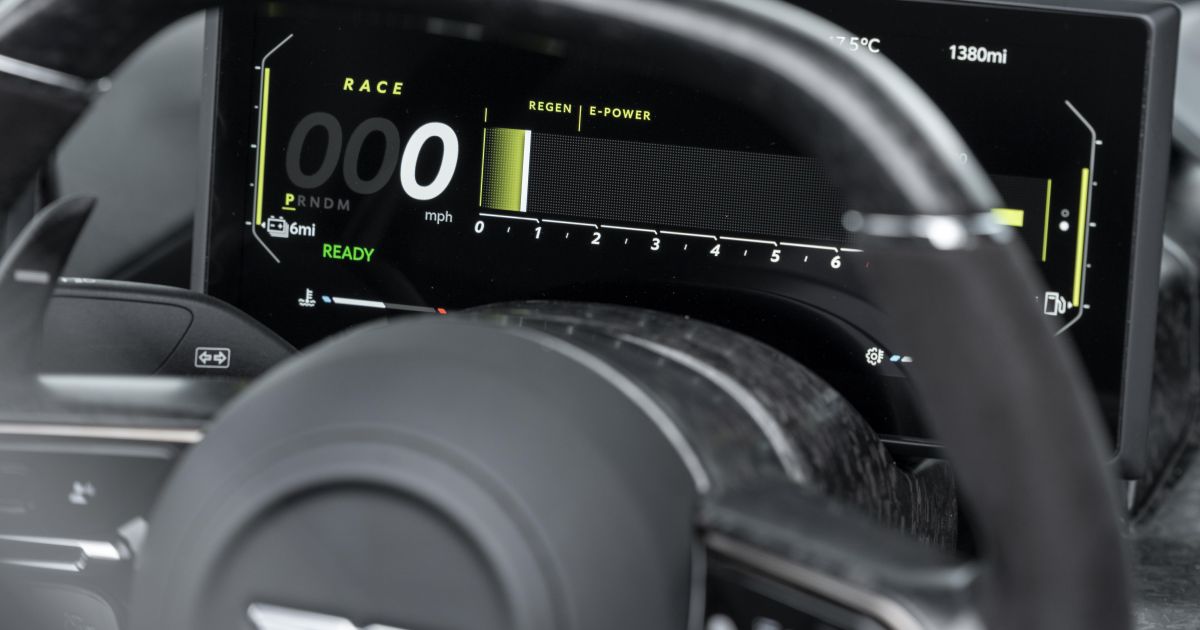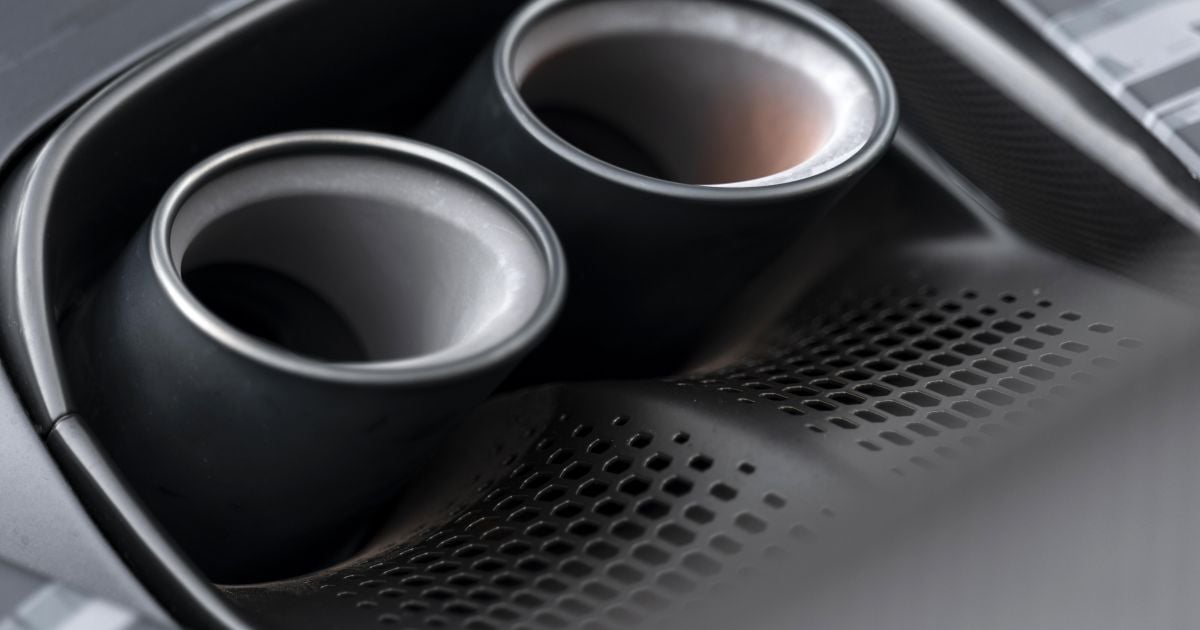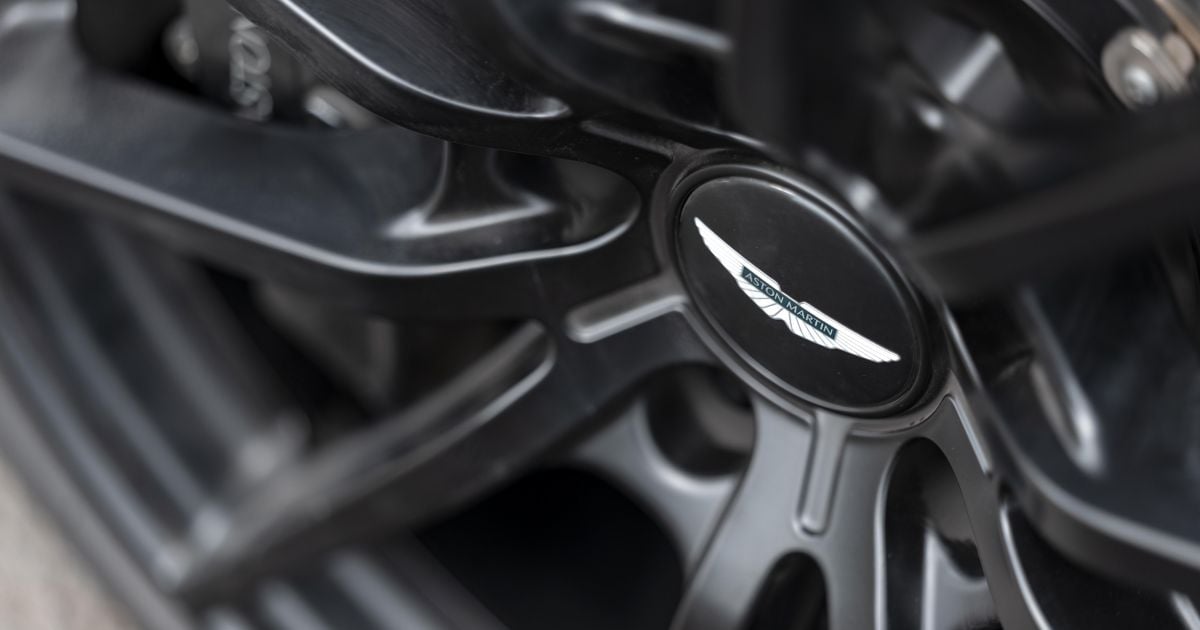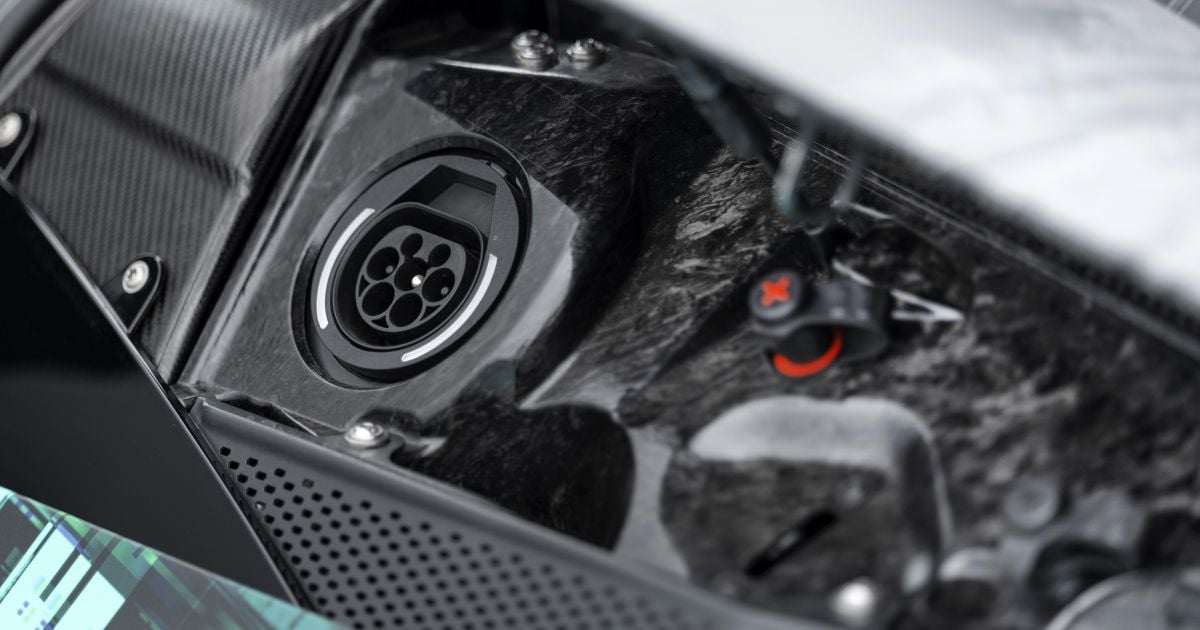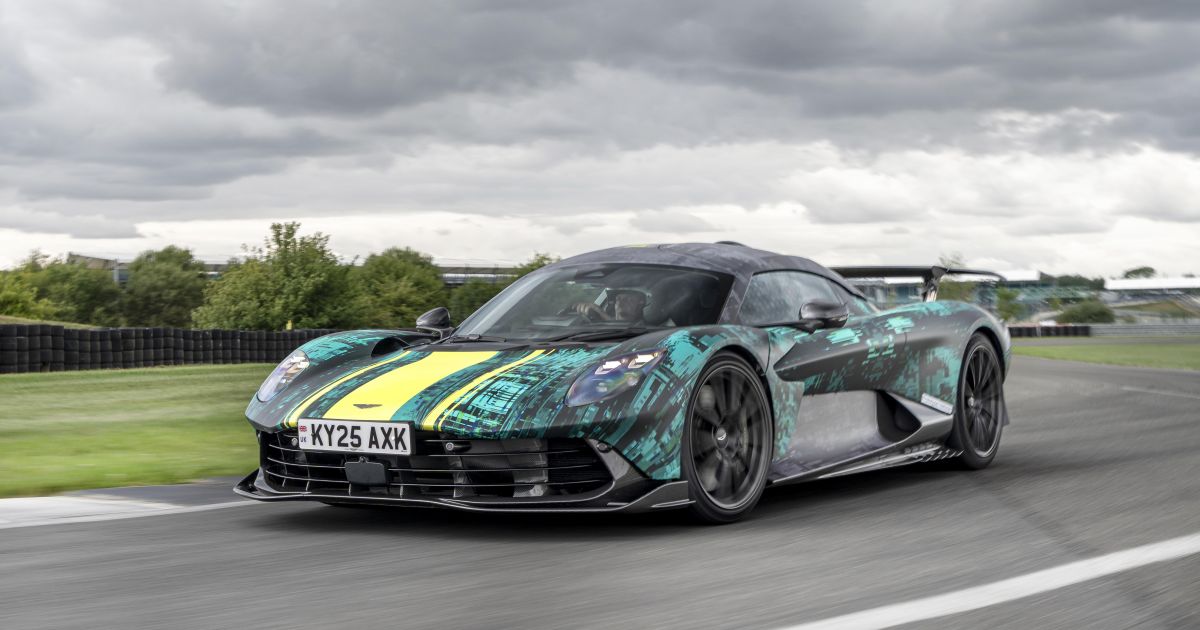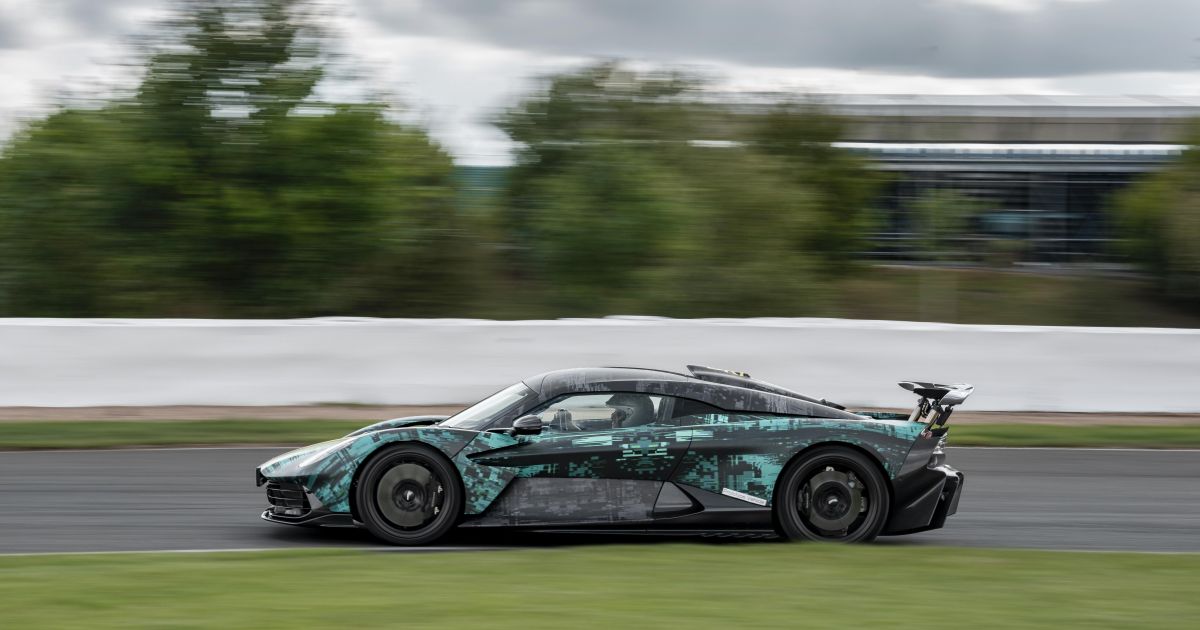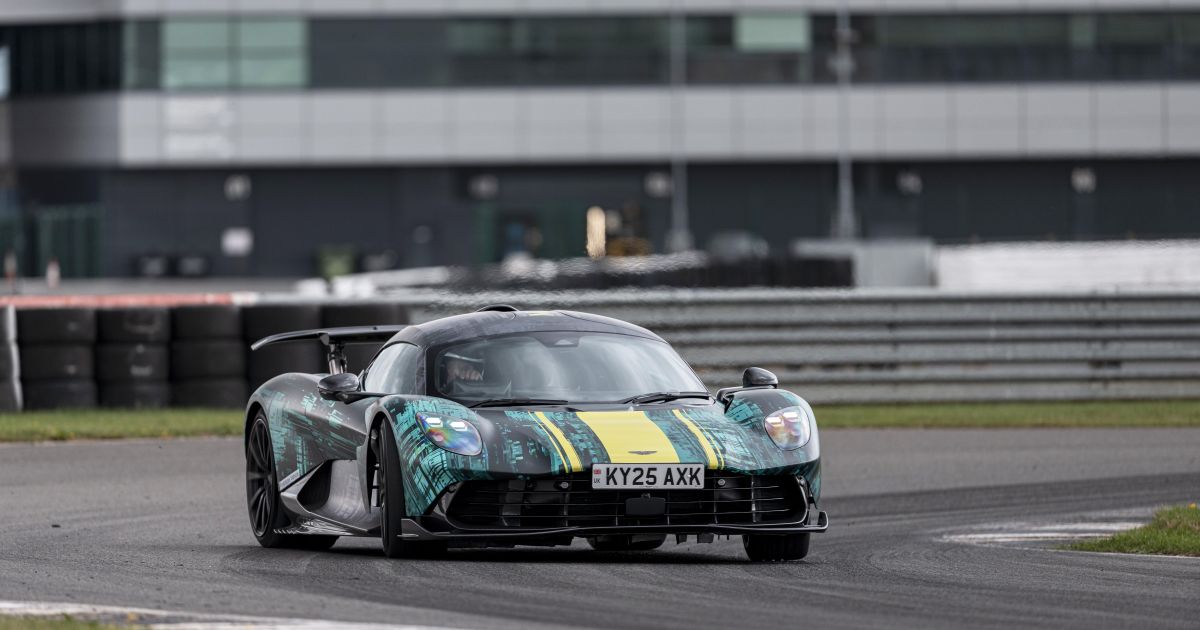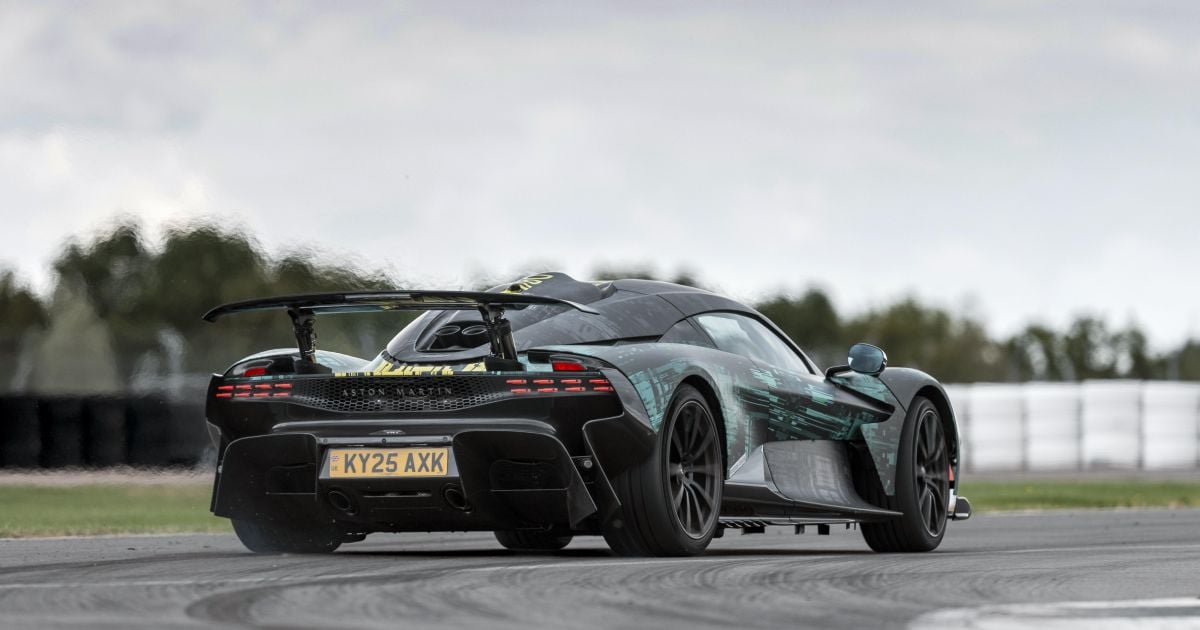Settling in behind the wheel of the Aston Martin Valhalla feels a bit like you’re getting ready to race a Le Mans hypercar.
You sit inboard, nestled up against a narrow centre console, snugged in hip-hugging seats that place your backside 25mm lower to the ground than in any other mid-engine supercar. The firewall separating you from the internal combustion engine is right at your shoulder blades.
Immediately ahead of you, behind the trapezoidal steering wheel, is a simple screen with a configurable dash display. The windscreen bulges forward, supported by contorted A-pillars.
Bodywork looms over wheels located just ahead of your feet, and the view of the tarmac ahead starts right at the base of the windscreen.
Look around the cockpit and the race-face vibe fades just a little.
There’s switchgear identical to that of regular Aston Martins on the steering wheel and centre console, speaker grilles and vents that betray the presence of audio and air conditioning systems, and luxury touches such as power reach and rake adjustment for the steering wheel.
It might look a bit like Aston Martin’s mega-dollar Valkyrie, a barely useable Le Mans racer for the road created by legendary F1 designer Adrian Newey and powered by a mid-mounted V12 that’s so loud you must wear ear protection when you drive it, but the Valhalla is meant to be a supercar you can drive every day. It’s Aston’s first proper production mid-engine sports car.
The Valhalla is underpinned by a bespoke lightweight carbon-fibre monocoque chassis, with aluminium subframes locating the multilink rear axle and an F1-style pushrod front suspension.
It has a plug-in hybrid powertrain that comprises a 609kW, flat-plane crank version of Mercedes-AMG’s versatile 4.0-litre bi-turbo V8, and three electric motors that between them produce an additional 185kW.
Two of the e-motors, compact radial flux units designed specifically for the Valhalla, are located at the front axle to drive the front wheels and are housed within a custom-built electric drive unit that allows cross-axle torque vectoring. The third e-motor is integrated with the new eight-speed dual-clutch transmission.
The three e-motors are powered by an advanced high-performance battery that combines combines the ability to rapidly deploy its state of charge with fast energy absorption and high-power density. The battery is cooled by an electrically non-conductive fluid to ensure each of its 560 individual cells are kept at their optimum temperature.
Total system output of the Valhalla’s powertrain is 794kW and 1100Nm. That’s enough grunt to deliver a claimed 0-100km/h acceleration time of 2.5 seconds, and a top speed of 350km/h from a car weighing about 1720kg.
The Valhalla is fitted with an active aero system developed with help from engineers at the Aston Martin Aramco F1 Team. The system can vary the angle of attack for the front and rear wings to help maintain aerodynamic balance across a broad performance envelope.
The aero hardware and software help the Valhalla develop more than 600kg of downforce between 240km/h and 350km/h.
The by-wire braking system combines giant Brembo carbon-ceramic rotors – 410mm at the front and 390mm at the rear – the largest ever fitted to an Aston Martin, with regenerative braking from the front e-motors.
All are modulated by the Valhalla’s integrated vehicle dynamics control system. The e-motor in the transmission recoups energy and sends it to the battery when the driver lifts off the throttle.
Standard wheels are forged aluminium alloys, 20-inch up front and 21-inch at the rear, wrapped in 285/30 and 335/35 Michelin Pilot Sport 5S tires respectively. The larger rear tires funneling the lion’s share of the PHEV powertrain’s torque to the tarmac with the help of an e-diff.
On start-up, the Valhalla selects Sport as the default drive mode. Three other modes, Pure EV, Sport+ and Race, can be selected via the rotary controller on the flying buttress centre console.
Each has its own combination of settings for the powertrain, including front axle torque vectoring and hybrid system integration, plus different suspension stiffness, active aero, and steering calibrations.
In Pure EV mode, the Valhalla is driven solely by the front e-motors and will travel up to 14km at speeds up to 140km/h before the internal combustion engine fires up.
For our test drive at Aston Martin’s compact Stowe circuit at Silverstone, factory race driver Darren Turner recommended the Sport+ drive mode, with the transmission set to manual shifting.
He also suggested we switch the stability control off, and set the traction control to five, its mid-way setting (as in the ‘entry-level’ Vantage sports car, one means the most intervention and nine, none).
Darren reckoned this setup would allow us to make the most of the Valhalla’s prodigious power and torque on the tight and twisty track. And he was right.
It might be a mid-engine supercar with almost 800kW on tap, but the Valhalla instantly felt as benign and playful as Aston’s entry level Vantage coupe. By the second lap we were drifting it out of the tight corners with complete confidence.
Though it doesn’t rev as hard as other modern flat-plane crank V8s, its peak power and torque arriving at a relatively modest 6700rpm, the snarly Mercedes-AMG engine is epic.
What’s more, the instant-on torque from the e-motors makes the Valhalla feel punchier and more responsive any of the non-hybrid Aston V8s, a sensation amplified by the quick shifts from the dual-clutch transmission.
There’s a lot going on under the skin of the Valhalla, but you’re never aware of it. There might be a pair of e-motors at the front axle instantly varying the torque to help with turn in response and corner exit, but you never feel them.
The steering is direct and communicative, telegraphing camber and surface changes and slip angles as clearly as if the Aston was a lightweight rear-drive car.
It’s ultra-high tech, the Valhalla, but it feels remarkably analogue from behind the wheel. And such is the coherence of the chassis and powertrain, you can quickly find balance and pace in this fast and powerful mid-engine Aston.
The only time we could feel the front axle’s e-motors at work is when we switched between the Sport+ and Race modes.
Different mapping means Sport+ mode delivers more hybrid intervention, and the car pulled a touch more strongly out of Stowe’s tight corners. But the interaction between the internal combustion engine and the e-motors was totally seamless.
Aerodynamics is the one area where there is a clear link between the Valkyrie and the Valhalla. “We took the active aero learnings from the Valkyrie and fine-tuned them,” confirmed Aston Martin vehicle performance director, Simon Newton.
“But the task was a bit more complex with Valhalla because we have a lot more drivetrain options to balance.”
The Stowe circuit isn’t big enough to assess the effectiveness of the active aerodynamics of the Valhalla, though in Race mode we could watch the active rear wing moving its angle of attack between the high downforce and drag reduction settings and snapping to attention to act as an air brake under heavy braking.
What’s most impressive about the Valhalla is that despite a powertrain layout and technologies that are unfamiliar territory for Aston Martin, it feels like an Aston Martin. It has the same combination of performance and approachability that makes the current Aston Martin lineup so appealing to drive. It’s fast but not threatening as you approach its limits.
That’s good news for a coming generation of Aston Martins that, like the Valhalla, will all have 745kW or more plug-in hybrid powertrains, and electrically driven front axles.
“We are on a journey with hybrids,” confirms Mr Newton, “it’s exciting what we’ve learned from the Valhalla project; how to leverage the systems to really amplify the traditional Aston driving experience and take it to the next level.”
Click the images for the full gallery

